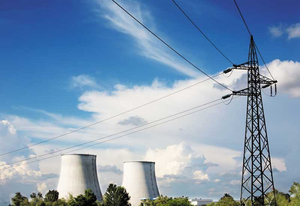
Chennai: Nuclear fuel loading at the 700 MW plant at the Rajasthan Atomic Power Project has commenced, atomic power major Nuclear Power Corporation of India Ltd (NPCIL) announced on Friday.
According to NPCIL, the fuel loading process began on Thursday at the plant located in Rawatbhata in Rajasthan.
The Initial Fuel Loading process began after receiving permission from the Atomic Energy Regulatory Board (AERB) and on completion of all other requirements, NPCIL said.
The Initial Fuel Loading process will be followed by the First Approach to Criticality (start of nuclear fission for the first time) and subsequent power generation.
According to NPCIL, commercial production of power by Unit 7 will happen this year.
The atomic power major also said the other 700 MW plant (Unit 8) is expected to come on line next year.
NPCIL said Unit 7 at RAPP is the third in the series of 16 700 MW Pressurised Heavy Water Reactors (PHWR) being built in the country. The first two of the 700 MW PHWRs commenced commercial operations at Kakrapar (Units 3 and 4) in Gujarat in 2023-24, NPCIL said.
The two units in Kakrapar are working at good capacity factor.
Late last month the 220 MW-Unit 3- at Rajasthan Atomic Power Station (RAPS) was connected to the grid after undergoing major renovation and modernisation – replacement of coolant channel, feeder and other upgrades.
The Unit 3 or RAPS 3 has now enhanced safety measures and 30 years of extended life, NPCIL said.
The RAPS 3 commenced commercial power production in June 2000 and was in operation for 22 years before it was taken up for renovation and modernisation in 2022.
In March 2024, India stepped into the second phase of the three-stage nuclear power programme with ‘core loading’ at the first indigenous 500 MW Prototype Fast Breeder Reactor (PFBR) set up in Kalpakkam near Chennai.
The core loading process includes fuel loading.
The 500 MW PFBR is built by fast breeder reactor company Bhartiya Nabhikiya Vidyut Nigam Ltd (BHAVINI).
Once commissioned, India will only be the second country after Russia to have a commercially operating fast breeder reactor.
IANS



















